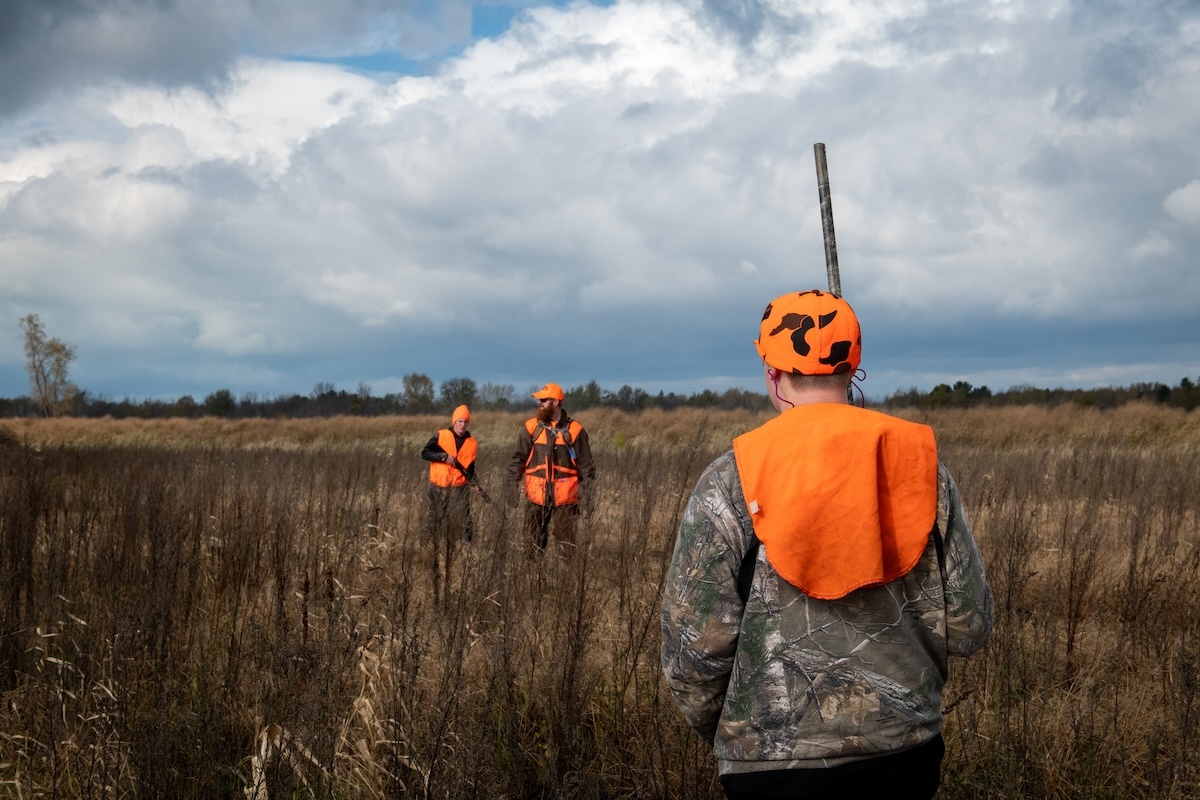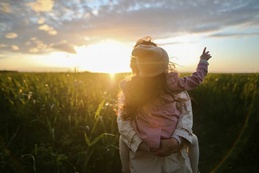
Hunting & Fishing Fall Preview
The DNR shares advice, observations, and new regulations for fall/winter 2025
By Victor Skinner | Sept. 6, 2025
The close of summer in northern Michigan opens up an array of hunting and fishing opportunities across the region this fall and winter, from multiple deer seasons, to fish spawning runs, to pursuits for waterfowl, upland game birds, and turkey.
While conditions and regulations for most remain largely the same as 2024, some will come with new or expanded opportunities, and others will face complications from wreckage left behind from spring ice storms, according to officials with the Michigan Department of Natural Resources.
Here’s what hunters and anglers need to know for the 2025 hunting and fall fishing seasons, along with insight into what the DNR expects for Northwest Lower Michigan.
Deer
Qualified youth and hunters with disabilities kick off the 2025 deer season with the Liberty Hunt Sept. 13-14, followed by an early antlerless firearm season open to everyone on public and private lands Sept. 20-21. Archery season runs Oct. 1 to Nov. 14, then it’s the traditional firearm season Nov. 15-30, muzzleloader season Dec. 5-14, and late antlerless firearm Dec. 15 to Jan. 1.
In a dozen counties across northwest Michigan—from Mason County east to Osceola County, north to Emmet County—antler point restrictions limit buck harvests to those with three or more on a side for a single license, or three or more and four or more for a combo license.
Brent Rudolph, the DNR’s deer management specialist, says regulation changes in 2024 allow hunters to tag antlerless deer with the restricted license during the regular season, as well as antlerless seasons, on both public and private lands. Previously, antlerless seasons were restricted to private lands.
“You can’t just shoot any buck that comes along, so take the opportunity to take an antlerless deer,” Rudolph says. “You don’t have to do those [restricted tags] in any order.”
The change, along with another that opens up antlerless deer tags previously distributed by deer management unit to any DMU, are designed to boost the harvest of does to help wildlife managers control the growing deer population, he says.
“Our 2024 harvest survey report showed hunter numbers and hunter effort and harvest … were all up a little bit, success was up a little bit,” Rudolph says. “Hopefully, we’ll continue to see that trend.”
He adds that deer numbers and condition are generally looking good. “Mast reports have been pretty good, as well,” Rudolph says, noting growing conditions were generally favorable for berries and other soft mast in most places, so deer should be well fed going into the season.
However, Rudolph warns the backwoods in counties hit by spring ice storms have changed dramatically.
“Reports on roads and campgrounds getting open are pretty good, but you get back in the woods and there’s still a lot of downed trees,” he says. “Longer term, it will probably be a boon for deer by stimulating forest regeneration and food resources, with more soft mast. But it could make for some difficult maneuvering in the woods for some folks. Some good advice would be to scout ahead and plan accordingly.”
More information about the 2025 deer hunting seasons and efforts to manage the state’s growing deer population is available at Michigan.gov/deer.
Fish
The changing weather will boost opportunities for several fish species across the region, particularly salmon, steelhead, lake trout, cisco, and small mouthed bass, says DNR fisheries management biologist Heather Hettinger.
“If temperatures are cooling down, that’s when things start taking off,” she says. “If we get a few nights getting cooler, we’ll see bass transition to fall feeding.”
“Salmon fishing has been good, pretty much from Manistee to Petoskey, Harbor Springs,” Hettinger adds, and those fish will soon begin spawning runs from the big lake up area rivers. “It’s a little bit slower to the north, it takes those fish a little bit longer to come through” systems like the Betsie or Jordan rivers.
In Grand Traverse Bay, “it just wasn’t as steady as we’ve seen in years past” for cisco and lake trout over the summer, but “I would expect lake trout fishing to pick up as we get into September,” Hettinger says.
“They’re down a little bit this year. That’s been the only major concern I’ve heard from anglers,” she says. “The fact it’s been difficult for both [species] makes me think it’s environmental. It’s an important fishery, both of those species, so it’s definitely something we’re going to keep an eye on.”
For stream anglers, Hettinger recommends “they know what stream type they’re in,” as several close to fishing at the end of September. “The Bear, Jordan, Boyne, Boardman—all have sections open year-round,” she says, “but smaller waterways close Sept. 30.”
Birds
Wetland conditions for waterfowl are “actually looking decent for the Northern Lower Peninsula,” with no “abnormally dry conditions,” DNR waterfowl management supervisor Barb Avers says.
“In general, wetland conditions going into the hunting season for ducks and geese seem to be fair to good,” she says.
Hunters can target Canada geese through September, and Oct. 4 through Dec. 19, while duck season runs Oct. 4 through Nov. 30, and Dec. 13-14, though Avers says numbers are down for both species.
“Unfortunately, our Michigan duck numbers were down pretty substantially this year compared to last year,” Avers says, adding aerial surveys were complicated by weather. Biologists banding ducks “just feel like duck numbers are down—they’re just having a hard time finding ducks to band,” she says.
With upland game birds, regulation changes this fall focused on streamlining rules and expanding opportunity, with the entire state now open to fall turkey hunting, says Adam Bump, the DNR’s upland game bird specialist. “Most of the Northern Lower was closed to fall turkey previously,” he says.
The DNR also eliminated the application process and leftover license sales for turkey, shifting to a first-come, first-served system for the season that runs Sept. 15 to Nov. 14.
It “should be a decent year” Bump says for ruffed grouse and woodcock, improving on dry weather and the timing of migration that created poor hunting conditions for the latter in 2024.
“The biggest thing people have been talking about with upland forest bird hunting was the ice storm in the Northern Lower,” Bump says, echoing Rudolph’s prediction the wreckage will improve habitat long term. “Hunters might find roads still blocked by damage, or their traditional spots were damaged. … I think the long view for grouse and woodcock is better because of the ice storm, but this year hunting might be challenging.”
The ruffed grouse season runs statewide from Sept. 15 to Nov. 14, and Dec. 1 to Jan. 1, while woodcock hunting runs Sept. 15 to Oct. 29.
Safety Tips
There have been no significant outbreaks of chronic wasting disease in deer or avian flu in game birds or waterfowl in Northwest Lower Michigan this year, but DNR officials nonetheless recommend hunters take steps to help mitigate any risk.
“It’s when temperatures start dropping that [avian influenza] can flare up,” Avers says. “We expect it to show up later this fall, and we just tell hunters to take certain precautions.”
Recommendations center on avoiding contact with eyes, nose, and mouth when handling wild birds, using gloves when cleaning birds, double bagging carcasses, and thoroughly washing hands, knives, equipment, and surfaces used during processing. The DNR also recommends cooking all meat to an internal temperature of 165 degrees Fahrenheit, and keeping pets and other animals away during processing.
Additional details on avian influenza are available at Michigan.gov/hpai.
Speaking of healthy habits, Michigan health officials issued nearly 1,000 new or updated Eat Safe Fish guidelines for 2025, driven in large part by revised thresholds for perfluorooctane sulfonate. More commonly known as PFOS, the man-made forever chemicals used in a variety of applications, from fire-fighting foam to nonstick cookware, have been linked to a variety of health issues involving the liver, thyroid, and immune system.
While Hettinger says no new lakes in the region were added in the update, the Eat Safe Fish guidelines can be a valuable resource for area anglers who plan to eat their catch.
“If you’re fishing a new body of water or targeting a long-lived fish like lake trout, it’s always a good idea to consult those consumption guidelines,” Hettinger says.
License Limbo
At the time of this printing, lawmakers in Lansing are considering a request from the Michigan DNR to increase hunting, fishing, and boating license fees that’s facing fierce opposition from House Republicans amid ongoing budget negotiations.
DNR officials confirm that effort, designed to counter decades of declining sales, will not result in any increases for the 2025 hunting and fall fishing seasons, but increases could come next year.
The DNR derives the bulk of its roughly $530 million budget from license sales, and the current proposal to hike fees across the board would boost funding by about $28.8 million. A separate proposed fee increase for boaters would generate about $11.9 million, according to a Senate Fiscal Agency analysis.
Photo courtesy of the Michigan DNR.
Trending

Fighting Harder for Local Women and Children
Traverse Bay Children’s Advocacy Center (TBCAC) has been navigating a particularly challenging year. Though CEO Lande… Read More >>
Christmas in Sweden (by way of Benzie)
Musical duo Ingemar and Lisa Johansson, also members of Song of the Lakes group, bring “Christmas in Sweden: A Musical… Read More >>
Searching for a Sugar High
In the words of Cookie Monster, “NOM NOM NOM.” It’s cookie season, and we’re here for every gingerbr… Read More >>


